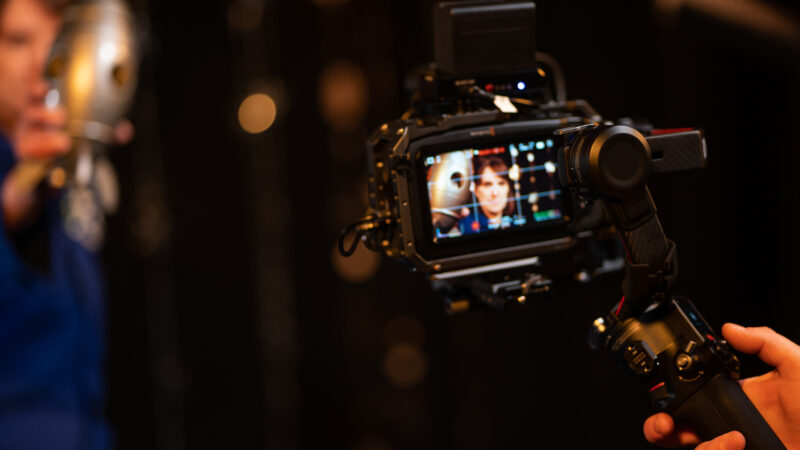Increasingly, NGOs, games designers and filmmakers are using virtual reality to build support for social causes. Rachel Segal Hamilton finds out how and asks them what questions this raises…
How do you get a middle-class office worker living a comfortable life in London or New York to identify with a child in a refugee camp in Jordan? Or with a man in Aleppo whose house has just been bombed? Or with a Nepalese woman who has lost her entire family in an earthquake?
Empathy is a currency, which can translate into signatures on petitions, financial donations, bodies at protests, changes to policy. How to elicit empathy for others is a challenge that’s faced campaigners for years – and one that’s only become harder with so many causes and digital distractions competing for our attention. 2D images, film, audio and words have long been central to this. And now campaigners have a new storytelling tool: virtual reality.
Amnesty International UK has been using VR since May this year. “We, probably more so than other big NGOs, struggle with generating empathy with the public,” says Amnesty Innovations Manager Reuben Steains. Most people in the UK don’t personally know someone whose human rights have been violated as they might with other issues, such as cancer. “We’ve got a greater gap to bridge. Virtual reality is like a portal from the streets of London to the streets of Aleppo.”
We’ve been talking about “virtual reality” since the mid-eighties when Jaron Lanier, founder of VPL Research, one of the first companies to specialise in VR, popularised the term. But the technology didn’t quite deliver on its early promise. Now it’s on the cusp of going mainstream, due in no small part to the rise of the VR headset, Oculus Rift. Its inventor, Palmer Luckey, started Oculus VR, in 2012, raising $2.4m on Kickstarter to develop the headset. Just two years later, Facebook bought the company for $2bn.
Although the Oculus headset is currently prohibitively expensive for most, a consumer version will be available next year for $1,500 all-in. Other companies, such as Sony, have their own VR products and you’ll find many consumer viewers, designed for use with smartphones and specialist apps, available to buy online. At the lower end of the market is Google Cardboard, made – as the name suggests – from cardboard and yours for a tenner, even less if you make it yourself.
The commercial uses for immersive media are obvious. Gaming, unlike some creative industries, is growing rapidly, now worth as much as £1.72bn to the UK economy. But VR has other, more altruistic, applications. In healthcare, it’s being used as a form of therapy for war veterans with Post Traumatic Stress Disorder, to train doctors in keyhole surgery, to help cancer sufferers prepare for treatment and stroke victims recover.
At Stanford University, cognitive psychologist Jeremy Bailenson is exploring the potential of VR to generate empathy for others across age groups, races, disabilities in his Virtual Human Interaction Lab. His studies have also looked at ways to produce empathy when it comes to environmental issues, by using VR to let people experience what it’s like to chop down a tree, or to be a fish swimming through a polluted ocean or a cow led to slaughter.
All this has huge potential for anyone using creativity to raise awareness of social issues: filmmakers, photographers, charities, journalists, games creators. “It gives a much more immersive experience,” says Asi Burak, president of Games for Change, “the idea that you can walk in someone else’s shoes and take their point of view is becoming much stronger.” Perspective; Chapter 1: The Party, the first in a three-part VR film series, which screened at Sundance this year, shows a fictional date rape situation from both the victim’s and the perpetrators’ perspectives, while “immersive journalist” Nonny de la Peña uses 3D virtual environments to present otherwise remote news stories as powerfully emotional, first-person experiences.
Clouds Over Sidra, a VR documentary about a young, Syrian girl living at Za’atari refugee camp in Jordan, won the Interactive Award at Sheffield Doc/Fest. It’s the first VR film to have been commissioned by the United Nations and was initially shown to an audience of state and business leaders at the World Economic Forum. “We look for stories set in disparate locales, often savaged by war, famine, or disease,” says Sam Storr, executive producer at Vrse.works, the American company behind Sidra. “To the vast majority who get to experience VR, these are faraway places they’ll never see. And while you might’ve seen these places on a TV screen a million times, the power of presence and being there is so much more affecting. The world gets a bit smaller.”
Amnesty was already supporting local activists in Syria to make citizen journalism so Steains began training them to take fully spherical photographs of bomb sites using their smartphones. Their images are useful as a research tool – to help Amnesty gather data on government munitions use – and as a way for these activists to get their stories out. “They’re bound by the traditional media channels and unfortunately traditional media isn’t talking about barrel bomb blasts on civilians in Aleppo or Damascus. They’re talking about teenage girls going to Syria to join ISIS,” Steains says.
Campaigners and fundraisers have been showing the photographs to the public in VR viewers when they talk to people about Amnesty’s work at outreach events and on the street. “It’s a tough job out there on the streets, trying to engage people in human rights. If we can give people a new experience it shifts the dynamic – there’s a bit of intrigue,” says Steains. Reactions have been emotional, with several people moved to tears by what they’ve seen.
Storr explains the heightened intensity of VR compared to screen-based media primarily in terms of physics. “The screen can be a window, but it can also be a barrier,” she says. “After a hundred plus years of looking at a screen, I believe traditional media has lost the shock it once had. What we do at Vrse is carry you through the screen and into the story, affording you proximity to real people and events.” For Steains, full immersion in an image is more empowering for the viewer. “With a 2D photograph, you’re only seeing, say, 10% of the surrounding context. With these images, you’re seeing 100%. It’s a much more honest portrayal and it takes out the photographer’s decision to only show you a small slice of the situation. You have the choice of where to look, what to focus on and which things are important to you.”
But, inevitably, ethical questions arise. “You sit there looking at a laptop or a mobile and the world outside is fighting for your attention but with VR the isolation is much greater,” Burak points out, leaving you susceptible to manipulation – negative, as well as positive. It’s a note of caution echoed by Sam Storr. “With VR, more so than any other visual medium, leading audiences astray can be incredibly detrimental. When you’re surrounded by a visual truth, your capacity for believing what you’re seeing skyrockets. That’s a vulnerable place to be,” she says.
Another concern is whether offering a taster of someone else’s life like this somehow trivialises their experiences, repackaging real lives as a form of entertainment, complete with its own cultural biases. Perhaps, but is this isn’t unique to VR, Burak stresses. “It exists everywhere – it exists in journalism, it exists in books. When [Pulitzer-Prize-winning, New York Times human rights journalist] Nicholas Kristof is writing 800 words about a woman’s story, he must take a position. He can do as many checks as he likes but there’s a limit to how much he can really validate everything. He’s doing a concise version of someone’s life story.”
“I would say the real question is, how sensitively and meaningfully is it done? Does it show you the depth of perspective, does it show you the range of possibilities? Does it give you the real choices that person has or does it simplify them so it becomes a cartoon?” he adds. “Like any other media, any other new tool, it’s not black and white.”
Rachel Segal Hamilton is a freelance writer. Follow her on Twitter: @rachsh
For more on VR try: Technology as a storytelling tool, Mixing reality, Art and the Rift – Entering virtual reality and A new artistic approach to virtual reality.




